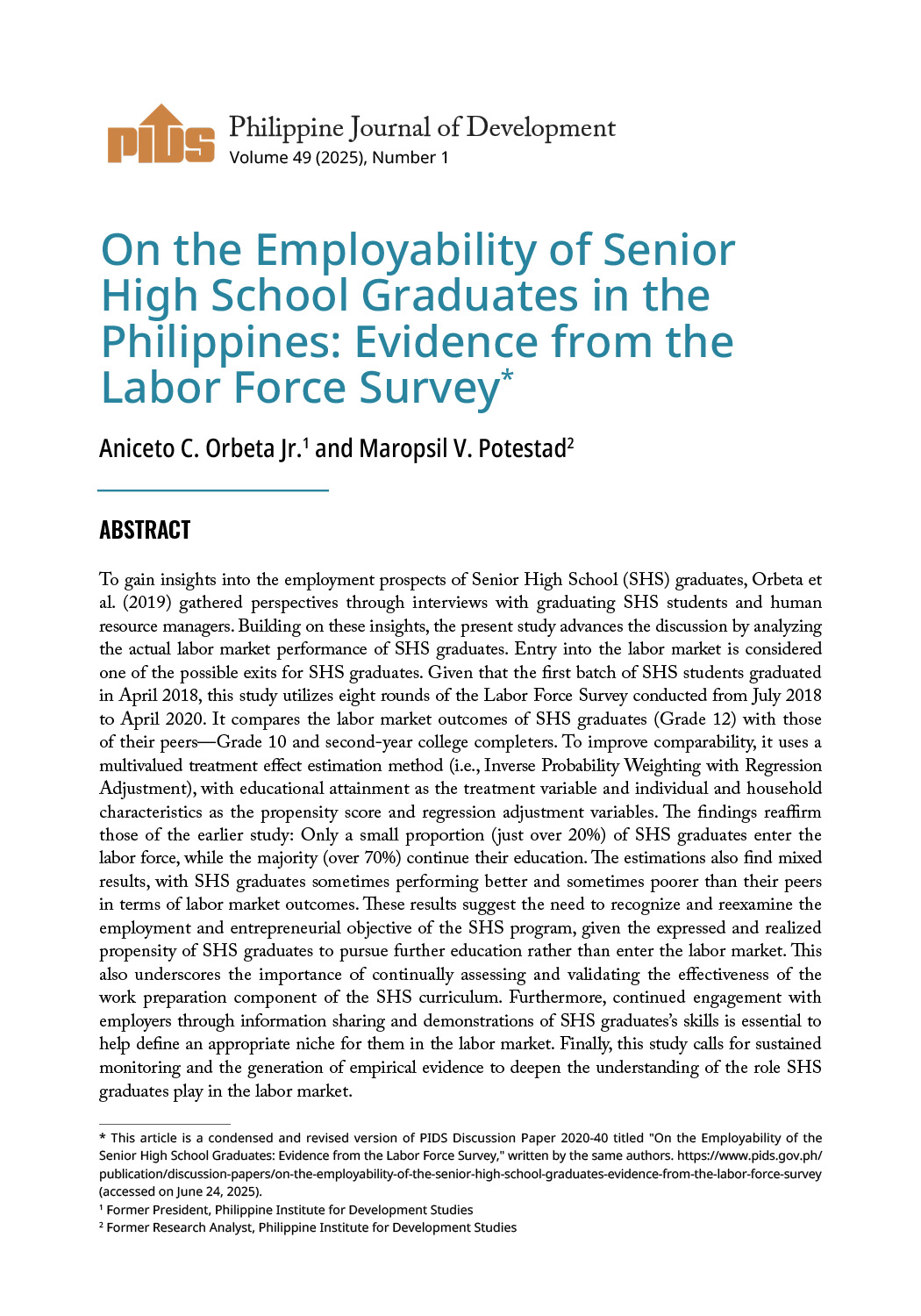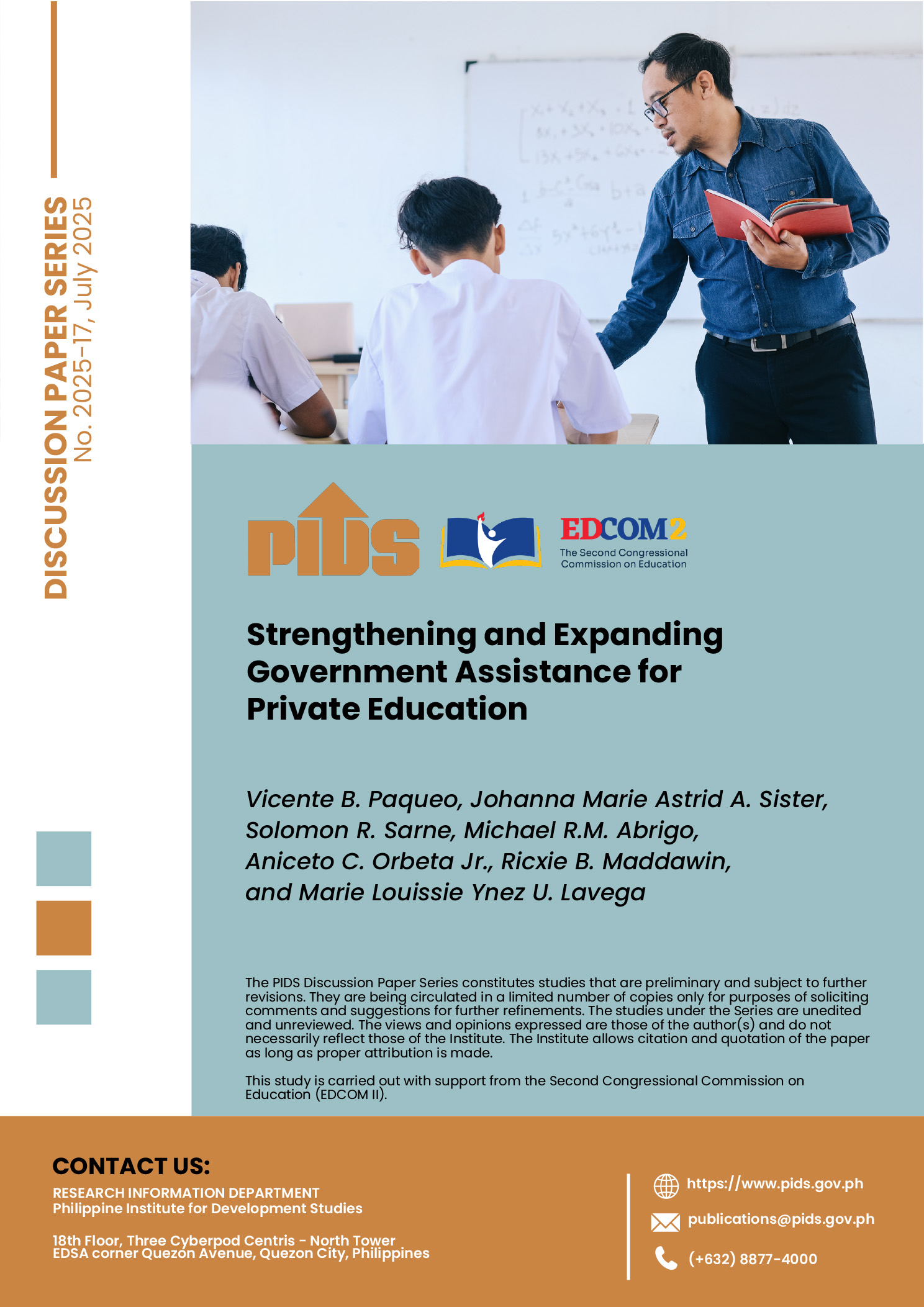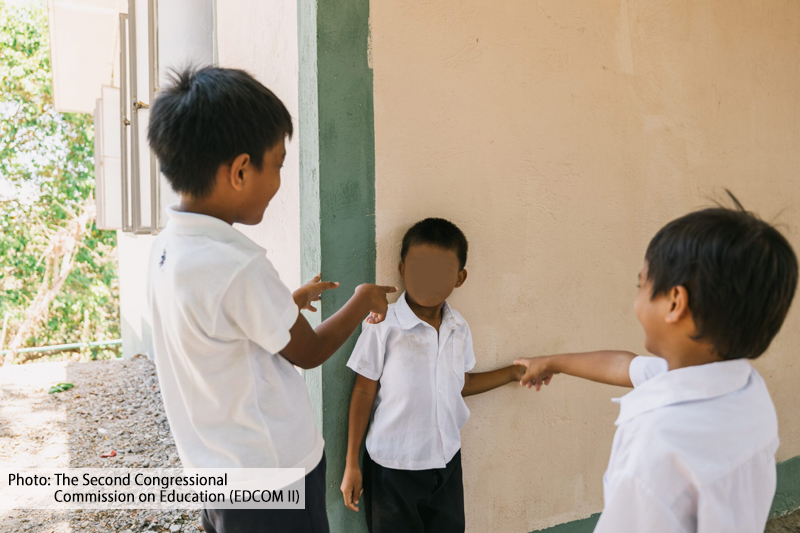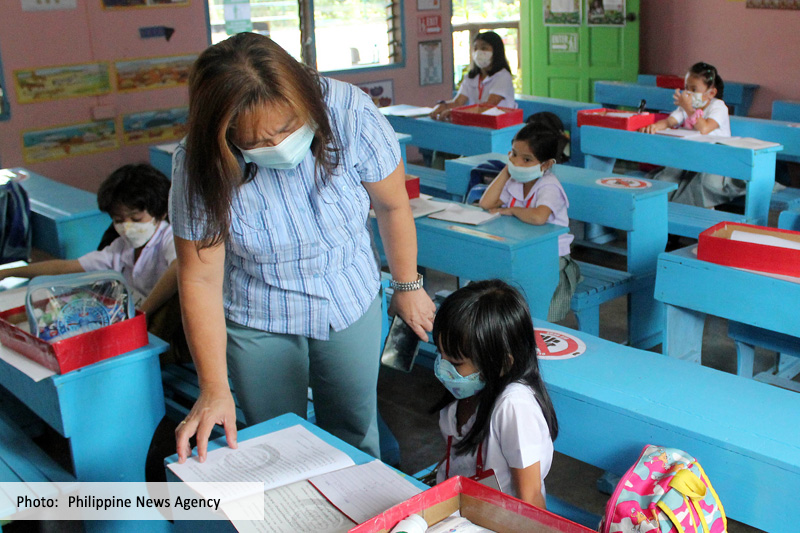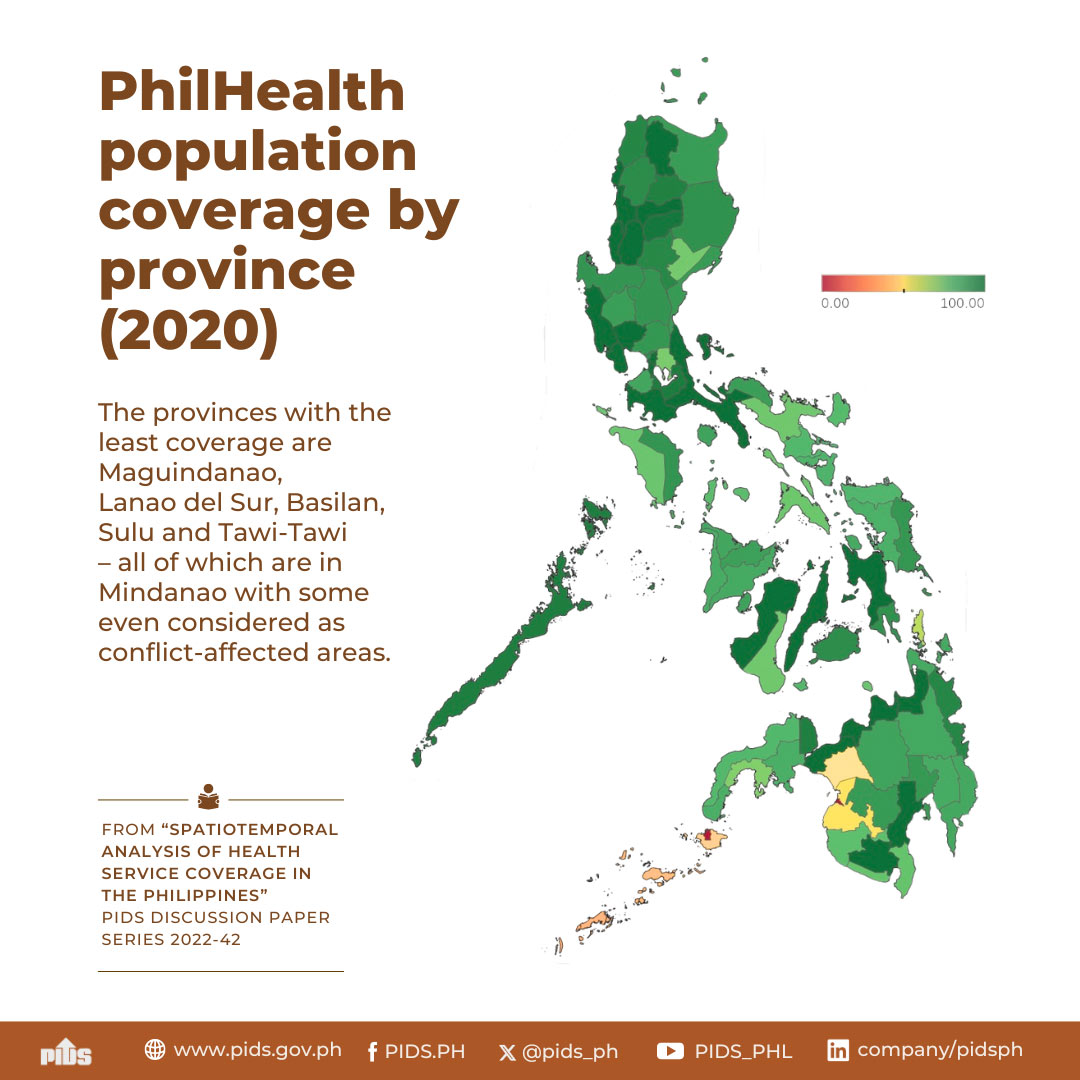
Inaccuracies in recorded nutrition status such as age, height, and weight measurements of children in public schools are among the major constraints that state think tank Philippine Institute for Development Studies (PIDS) encountered in assessing the effectiveness of the Department of Education's (DepED) School-Based Feeding Program (SBFP).
In her presentation at a seminar organized by PIDS and the Cordillera Studies Center of the University of the Philippines (UP) Baguio, PIDS Consultant and UP Professor Ana Maria Tabunda noted that there were inaccuracies in documenting the date of activities undertaken as part of the feeding program as well as the height and weight measurements and nutritional status of children before and after the feeding program. She added that there were also errors in the entries for birth dates and ages.
"Glaring errors include inconsistent recorded heights such as children having lower post-feeding height than pre-feeding height and missing post-feeding weight or height measurements. These inaccurate data in school documents as well as those obtained during the survey by PIDS researchers constrain proper assessment not only of the initial nutrition status of would-be program beneficiaries but also of the improvement in such status," Tabunda explained.
Thus, for proper documentation of progress, she recommended that all schools, including nonbeneficiary schools, must be provided with the recommended weighing scales and height measurement equipment.
"All schools need to be provided with these equipment, since nonbeneficiary schools also need to submit accurate nutrition status reports, which serve as the basis for determining which schools should implement the feeding program," she explained.
Tabunda also suggested that school heads, school nurses, and teachers must be trained on the proper use of such equipment and instill in them the importance of proper documentation of the pre-feeding, feeding, and post-feeding phases of the program. Accurate documentation, according to Tabunda, help in the proper selection of beneficiary schools and beneficiary pupils, as well as in monitoring and evaluating program outcomes. In addition, she suggested that DepED should provide schools with an application program such as Microsoft Excel to help them correctly compute a child’s age to the nearest month.
Given that the administration component of the budget has been increased, it was also recommended that food budget allocation must be increased. Likewise, the effect of inflation should also be considered in food budget allocation.
Finally, the Tabunda suggested that DepED should review its basis for the 70-percent nutrition target for the SBFP, which has since been increased to 80 percent in the school year (SY) 2015-16 implementation.
The link between malnutrition and poor performance in school such as absenteeism, early dropout, and poor classroom performance of school children is well established in the literature. Likewise, evidence shows that school-based nutrition and health interventions are effective in improving school performance. Thus, the DepED has been conducting conditional food transfer programs since 1997.
DepEd's feeding program was first offered as the Breakfast Feeding program in 1997 to address short-term hunger among public school children. It eventually shifted focus to addressing undernutrition or malnutrition after SY 2008-2009. In 2012, it was renamed to its current name SBFP as feeding time was no longer limited to breakfast. For SY 2014-15, the national government targeted all the 562,262 severely wasted children enrolled in kindergarten to Grade 6 in public schools for the SBFP, or about 3.8 percent of approximately 14.9 million children enrolled in public schools. Previously, DepED had been targeting only a fraction of the total number of severely wasted pupils due to budget constraints.
The SBFP provides food to severely wasted children or those whose weight-for-height measurements are below the minus-three standard deviation cut-off established by the World Health Organization for well-nourished populations. It is conducted in schools over a period of 100 to 120 feeding days for a given batch of program beneficiaries.
According to the PIDS paper jointly authored by Tabunda, PIDS Senior Research Fellow Jose Ramon Albert, and PIDS Consultant Imelda Agdeppa, the SBFP was generally implemented well, with majority of the school heads, teachers, and parents expressing appreciation for the program and with many of them expressing a desire to see the program continued, and if possible, expanded.
Although the target goal of having at least 70 percent of beneficiaries attain normal nutrition status by the end of the feeding program may have not been attained in SY 2013-14, the paper noted that these are caused by problems beyond the control of program implementers.
Meanwhile, the goal of improving school attendance by beneficiaries to at least 85 percent for the entire school year had been attained. However, the authors pointed out that children who are not beneficiaries of the program also have good school attendance records. They added that the feeding program appears to help improve attentiveness in class and sociability of beneficiary pupils.
The PIDS study, which surveyed about 7 percent of the total number of severely wasted pupils enrolled in the public elementary schools for SY 2013-14, aims primarily to assess the outcomes and impact of the SBFP in terms of its stated educational and nutritional objectives. It is part of a research project by PIDS to evaluate the effectiveness and impacts of key government programs and projects. Spearheaded by the National Economic and Development Authority and the Department of Budget and Management, the impact evaluation (IE) studies were conducted to promote greater transparency and accountability in government. IE is a special type of research that allows policymakers and program implementers to ascertain whether a particular program is achieving its objectives and whether the results are attributable to the intervention. ###
If you wish to know more about this study, please visit this page.
In her presentation at a seminar organized by PIDS and the Cordillera Studies Center of the University of the Philippines (UP) Baguio, PIDS Consultant and UP Professor Ana Maria Tabunda noted that there were inaccuracies in documenting the date of activities undertaken as part of the feeding program as well as the height and weight measurements and nutritional status of children before and after the feeding program. She added that there were also errors in the entries for birth dates and ages.
"Glaring errors include inconsistent recorded heights such as children having lower post-feeding height than pre-feeding height and missing post-feeding weight or height measurements. These inaccurate data in school documents as well as those obtained during the survey by PIDS researchers constrain proper assessment not only of the initial nutrition status of would-be program beneficiaries but also of the improvement in such status," Tabunda explained.
Thus, for proper documentation of progress, she recommended that all schools, including nonbeneficiary schools, must be provided with the recommended weighing scales and height measurement equipment.
"All schools need to be provided with these equipment, since nonbeneficiary schools also need to submit accurate nutrition status reports, which serve as the basis for determining which schools should implement the feeding program," she explained.
Tabunda also suggested that school heads, school nurses, and teachers must be trained on the proper use of such equipment and instill in them the importance of proper documentation of the pre-feeding, feeding, and post-feeding phases of the program. Accurate documentation, according to Tabunda, help in the proper selection of beneficiary schools and beneficiary pupils, as well as in monitoring and evaluating program outcomes. In addition, she suggested that DepED should provide schools with an application program such as Microsoft Excel to help them correctly compute a child’s age to the nearest month.
Given that the administration component of the budget has been increased, it was also recommended that food budget allocation must be increased. Likewise, the effect of inflation should also be considered in food budget allocation.
Finally, the Tabunda suggested that DepED should review its basis for the 70-percent nutrition target for the SBFP, which has since been increased to 80 percent in the school year (SY) 2015-16 implementation.
The link between malnutrition and poor performance in school such as absenteeism, early dropout, and poor classroom performance of school children is well established in the literature. Likewise, evidence shows that school-based nutrition and health interventions are effective in improving school performance. Thus, the DepED has been conducting conditional food transfer programs since 1997.
DepEd's feeding program was first offered as the Breakfast Feeding program in 1997 to address short-term hunger among public school children. It eventually shifted focus to addressing undernutrition or malnutrition after SY 2008-2009. In 2012, it was renamed to its current name SBFP as feeding time was no longer limited to breakfast. For SY 2014-15, the national government targeted all the 562,262 severely wasted children enrolled in kindergarten to Grade 6 in public schools for the SBFP, or about 3.8 percent of approximately 14.9 million children enrolled in public schools. Previously, DepED had been targeting only a fraction of the total number of severely wasted pupils due to budget constraints.
The SBFP provides food to severely wasted children or those whose weight-for-height measurements are below the minus-three standard deviation cut-off established by the World Health Organization for well-nourished populations. It is conducted in schools over a period of 100 to 120 feeding days for a given batch of program beneficiaries.
According to the PIDS paper jointly authored by Tabunda, PIDS Senior Research Fellow Jose Ramon Albert, and PIDS Consultant Imelda Agdeppa, the SBFP was generally implemented well, with majority of the school heads, teachers, and parents expressing appreciation for the program and with many of them expressing a desire to see the program continued, and if possible, expanded.
Although the target goal of having at least 70 percent of beneficiaries attain normal nutrition status by the end of the feeding program may have not been attained in SY 2013-14, the paper noted that these are caused by problems beyond the control of program implementers.
Meanwhile, the goal of improving school attendance by beneficiaries to at least 85 percent for the entire school year had been attained. However, the authors pointed out that children who are not beneficiaries of the program also have good school attendance records. They added that the feeding program appears to help improve attentiveness in class and sociability of beneficiary pupils.
The PIDS study, which surveyed about 7 percent of the total number of severely wasted pupils enrolled in the public elementary schools for SY 2013-14, aims primarily to assess the outcomes and impact of the SBFP in terms of its stated educational and nutritional objectives. It is part of a research project by PIDS to evaluate the effectiveness and impacts of key government programs and projects. Spearheaded by the National Economic and Development Authority and the Department of Budget and Management, the impact evaluation (IE) studies were conducted to promote greater transparency and accountability in government. IE is a special type of research that allows policymakers and program implementers to ascertain whether a particular program is achieving its objectives and whether the results are attributable to the intervention. ###
If you wish to know more about this study, please visit this page.

